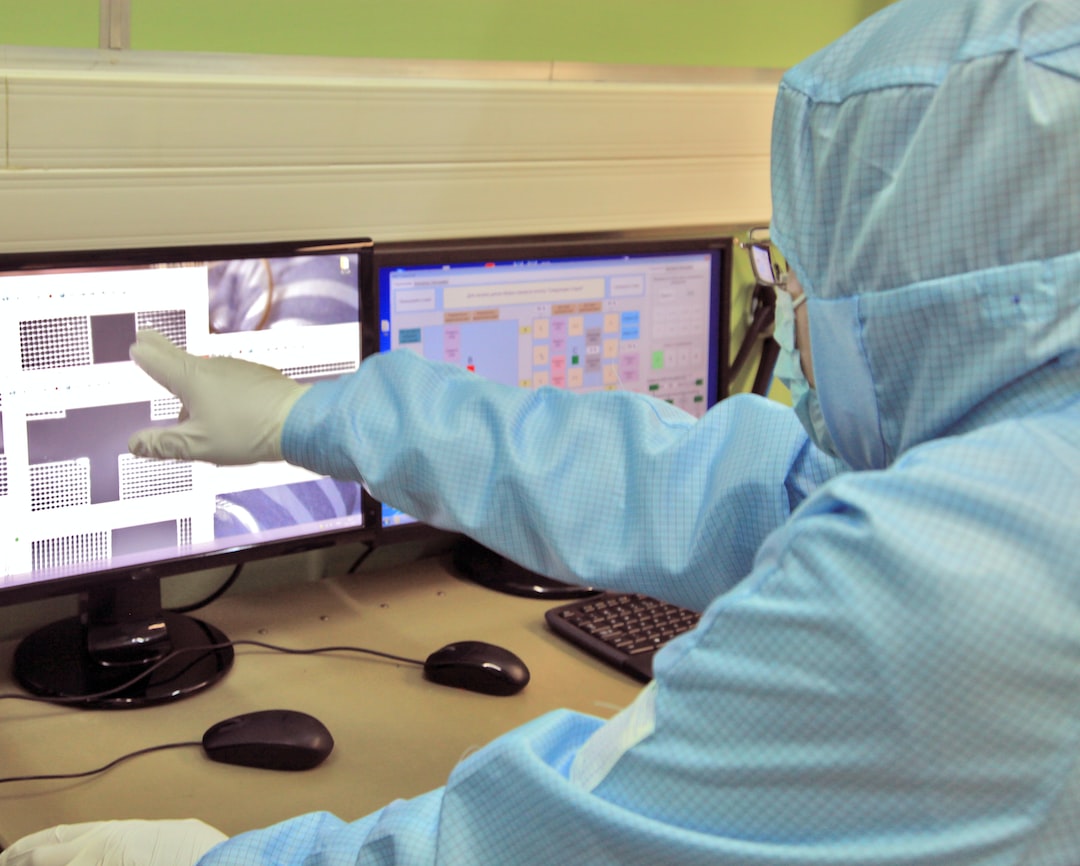Robotic cleaning equipment plays a crucial role in data collection and analysis in industrial facilities. These advanced machines are equipped with sensors and cameras that collect data on various parameters such as cleaning time, energy consumption, and performance metrics. This data is then analyzed using sophisticated algorithms to provide insights into the cleaning process.
One of the advantages of using robotic cleaning equipment for data collection is the accuracy and consistency of the data collected. Unlike manual methods, which can be prone to human error and inconsistencies, robotic cleaning equipment provides reliable and consistent data that can be used for analysis. This ensures that decisions made based on this data are accurate and reliable.
Another advantage of using robotic cleaning equipment for data collection is the efficiency and speed at which data can be collected. These machines are designed to work autonomously, allowing them to collect large amounts of data in a short period of time. This enables facility managers to have real-time access to data, allowing them to make timely decisions and take immediate action if necessary.
Benefits of Data-Driven Decision Making for Industrial Facilities
Data-driven decision making offers several benefits for industrial facilities. Firstly, it improves efficiency and productivity. By analyzing data on various parameters such as cleaning time, energy consumption, and performance metrics, facility managers can identify bottlenecks and inefficiencies in the cleaning process. This allows them to make informed decisions to streamline processes and improve overall efficiency and productivity.
Secondly, data-driven decision making leads to cost savings. By analyzing data on energy consumption, maintenance costs, and equipment performance, facility managers can identify areas where costs can be reduced. For example, they may discover that certain cleaning methods or equipment are more cost-effective than others. By making data-driven decisions to optimize these processes, companies can achieve significant cost savings.
Lastly, data-driven decision making enables better decision making overall. By having access to accurate and reliable data, facility managers can make informed decisions that are based on facts rather than assumptions or guesswork. This leads to better outcomes and reduces the risk of making costly mistakes.
Key Metrics to Track for Optimizing Industrial Cleaning Processes
To optimize industrial cleaning processes, facility managers need to track and analyze key metrics. These metrics provide insights into the performance of the cleaning process and help identify areas for improvement. Some key metrics to track include:
1. Cleaning time: This metric measures the time it takes to complete a cleaning task. By tracking cleaning time, facility managers can identify inefficiencies in the process and make data-driven decisions to streamline operations.
2. Energy consumption: Tracking energy consumption provides insights into the efficiency of the cleaning equipment and helps identify opportunities for energy savings. Facility managers can use this data to make informed decisions on equipment upgrades or changes in cleaning methods.
3. Equipment performance: Monitoring equipment performance metrics such as uptime, downtime, and maintenance requirements helps identify potential issues before they become major problems. By tracking these metrics, facility managers can make data-driven decisions on equipment maintenance and replacement.
4. Cleaning quality: This metric measures the effectiveness of the cleaning process in achieving desired cleanliness levels. By tracking cleaning quality, facility managers can identify areas where improvements are needed and make data-driven decisions to enhance the overall cleaning process.
How Robotic Cleaning Equipment Can Improve Efficiency and Productivity
Robotic cleaning equipment can significantly improve efficiency and productivity in industrial facilities. These machines are designed to work autonomously, allowing them to perform cleaning tasks quickly and efficiently. By automating the cleaning process, facility managers can free up valuable time and resources that can be allocated to other important tasks.
One example of how robotic cleaning equipment improves efficiency and productivity is through its ability to work continuously without breaks. Unlike human cleaners who need rest periods, robotic cleaning equipment can work non-stop, ensuring that cleaning tasks are completed in a timely manner. This leads to improved efficiency and productivity as more work can be accomplished in less time.
Another way robotic cleaning equipment improves efficiency and productivity is through its ability to navigate complex environments. These machines are equipped with advanced sensors and cameras that allow them to navigate around obstacles and clean hard-to-reach areas. This eliminates the need for manual intervention, saving time and effort.
Real-life case studies have shown the positive impact of robotic cleaning equipment on efficiency and productivity. For example, a manufacturing facility implemented robotic floor scrubbers to clean their production area. The robots were able to clean the entire area in half the time it took human cleaners, resulting in significant time savings. This allowed the facility to allocate resources to other important tasks, improving overall productivity.
Real-Time Monitoring and Analysis for More Accurate Decision Making
Real-time monitoring and analysis play a crucial role in data-driven decision making for industrial cleaning processes. Real-time monitoring involves collecting data on various parameters such as cleaning time, energy consumption, and equipment performance in real-time. This data is then analyzed using sophisticated algorithms to provide insights into the cleaning process.
One of the advantages of real-time monitoring and analysis is the ability to make timely decisions. By having access to real-time data, facility managers can identify issues or inefficiencies in the cleaning process as they occur. This allows them to take immediate action and make informed decisions to address these issues before they become major problems.
Real-time monitoring and analysis also enable proactive decision making. By analyzing real-time data, facility managers can identify trends and patterns that may indicate potential issues or opportunities for improvement. This allows them to make proactive decisions to optimize the cleaning process and achieve better outcomes.
Case Studies: Successful Implementation of Data-Driven Decisions in Industrial Facilities

Several real-life examples demonstrate the successful implementation of data-driven decisions in industrial facilities. One such example is a food processing plant that implemented data-driven decision making to optimize their cleaning processes. By collecting and analyzing data on cleaning time, energy consumption, and equipment performance, the facility was able to identify bottlenecks and inefficiencies in their cleaning process. They made data-driven decisions to streamline operations, resulting in improved efficiency and productivity.
Another example is a manufacturing facility that implemented real-time monitoring and analysis to optimize their cleaning processes. By collecting and analyzing real-time data on cleaning time, energy consumption, and equipment performance, the facility was able to identify issues as they occurred and take immediate action. This allowed them to make timely decisions that improved overall efficiency and productivity.
The benefits of implementing data-driven decisions in these case studies were significant. Both facilities achieved cost savings through improved efficiency and productivity. They also experienced better decision making overall, leading to better outcomes and reduced risk.
Challenges and Best Practices for Implementing Data-Driven Decision Making in Industrial Cleaning
Implementing data-driven decision making in industrial cleaning processes can be challenging. One common challenge is the availability and quality of data. Facility managers need access to accurate and reliable data to make informed decisions. However, collecting and analyzing this data can be time-consuming and resource-intensive. To overcome this challenge, it is important to invest in the right tools and technologies that can automate data collection and analysis.
Another challenge is resistance to change. Implementing data-driven decision making requires a shift in mindset and culture. Some employees may be resistant to change or skeptical about the benefits of data-driven decision making. To overcome this challenge, it is important to communicate the benefits of data-driven decision making and involve employees in the process. Providing training and support can also help employees embrace the change and see the value in data-driven decision making.
Best practices for successful implementation of data-driven decision making in industrial cleaning include:
1. Start with clear goals: Clearly define the goals and objectives of implementing data-driven decision making. This will help guide the process and ensure that decisions are aligned with the desired outcomes.
2. Invest in the right tools and technologies: Choose tools and technologies that can automate data collection and analysis. This will save time and resources and ensure accurate and reliable data.
3. Involve employees: Involve employees in the process of implementing data-driven decision making. Provide training and support to help them embrace the change and see the value in data-driven decision making.
4. Monitor and evaluate: Continuously monitor and evaluate the effectiveness of data-driven decision making. Collect feedback from employees and stakeholders to identify areas for improvement.
The Future of Data-Driven Decision Making in Industrial Cleaning: Emerging Technologies and Trends
The future of data-driven decision making in industrial cleaning looks promising, with emerging technologies and trends set to revolutionize the industry. One emerging technology is artificial intelligence (AI), which has the potential to transform data analysis by automating complex tasks and providing more accurate insights. AI-powered algorithms can analyze large amounts of data quickly, allowing facility managers to make informed decisions in real-time.
Another emerging trend is the Internet of Things (IoT), which involves connecting devices and sensors to collect and exchange data. In industrial cleaning, IoT can enable real-time monitoring of cleaning equipment and processes, providing valuable insights into performance and efficiency. Facility managers can use this data to make data-driven decisions that optimize cleaning processes and achieve better outcomes.
The Importance of Leveraging Data to Optimize Industrial Cleaning Processes
In conclusion, data-driven decision making plays a crucial role in optimizing industrial cleaning processes. By collecting and analyzing data, facility managers can gain valuable insights into their operations, identify areas for improvement, and make informed decisions to drive performance. Robotic cleaning equipment plays a vital role in data collection and analysis, providing accurate and reliable data that can be used for decision making.
The benefits of data-driven decision making in industrial facilities are significant. It improves efficiency and productivity, leads to cost savings, and enables better decision making overall. By tracking key metrics and leveraging real-time monitoring and analysis, facility managers can make timely and proactive decisions that optimize cleaning processes and achieve better outcomes.
While implementing data-driven decision making in industrial cleaning processes may come with challenges, following best practices and embracing emerging technologies and trends can help overcome these challenges and unlock the full potential of data-driven decision making. The future of data-driven decision making in industrial cleaning looks promising, with AI and IoT set to revolutionize the industry. By leveraging data, industrial facilities can optimize their cleaning processes and stay ahead in an increasingly competitive market.

